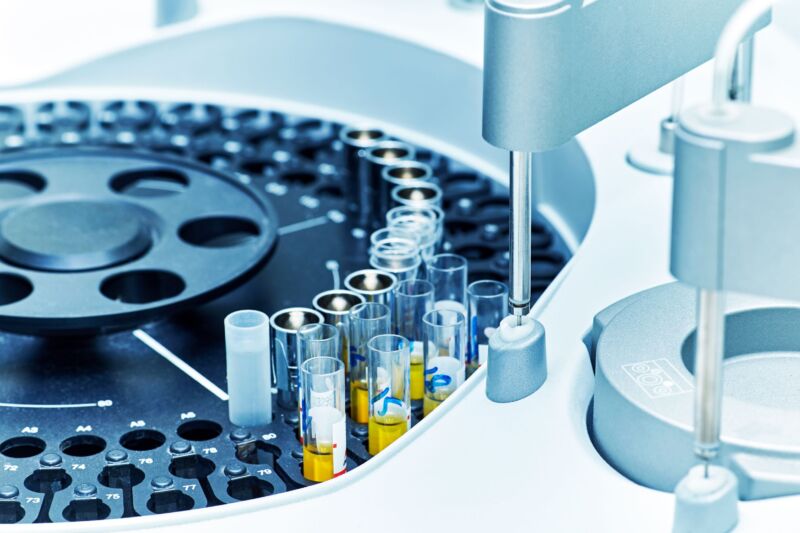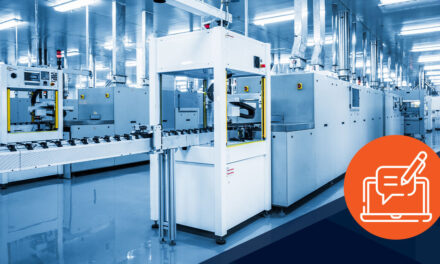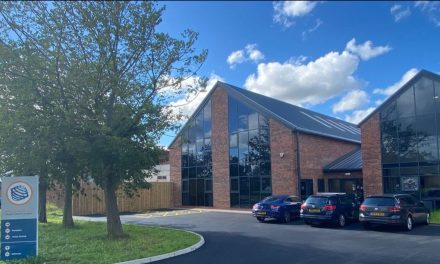In May 2021, NASA’s OSIRIS-REx spacecraft left its study asteroid Bennu to return back to Earth. Scientists will use the rubble it brings back to learn more about how the planets formed and how life arose on Earth. This is just one example where a technological feat is aiding research. Here Stewart Goulding, managing director of precision drive system supplier, EMS, explores how and where advanced micromotor technology is facilitating investigation and experimentation projects.
While new ideas, creative leaps and pure chance can all play a role in new scientific discoveries, technological advances provide the supporting resources to make new concepts a reality. Due to their ability to complete tasks independently and at a faster rate, automated equipment has accelerated research in a number of industries.
Laboratory labour
One area where automation has made waves is in laboratories. Previously, testing samples was a tedious process, filled with manual mixing, transporting and handling of samples. Now, motorised equipment takes on many of the simpler laboratory tasks, allowing staff to have more time to focus on innovation.
For instance, a motorised conveyer belt can transport samples around the laboratory to its designated station. There, a robot can pick up the sample and scan its barcode using an onboard camera to identify it and decipher what type of analysis is required.
Using its motorised arm, the robot then places the sample into the appropriate piece of laboratory equipment, such as a centrifuge or a spectrophotometer. Motors are also found in these pieces of equipment, helping to power the spinning force in centrifuges, and positioning the sample mounts in spectrophotometers.
Laboratory automation can aid medical research, such as in the analysis of samples from patients in a clinical trial, and also speed up drug discovery by enabling high throughput screening of potential new medicines against a compound library.
Taking the plunge
The benefits of micromotors in research aren’t solely confined to the four walls of a laboratory. Automated equipment is plunging into the depths of oceans to deliver important information to scientists above.
Seismometers are instruments that measure and record details of earthquakes, such as force and duration. The data recorded can be used to locate and characterise earthquakes, and to study Earth’s internal structure.
Ocean-floor seismometers operate several kilometres below the surface, therefore making cables unpractical. Instead, they are battery powered, and placed on the floor for their operating duration, then retrieved to take back to the laboratory for analysis.
In order for the sensors to accurately record the seismic data, it’s important that the seismometer is completely level once placed on the ocean floor. As part of the levelling process, accelerometers determine the degree of tilt, which is then communicated to the microprocessor.
The microprocessor then uses those values and a levelling algorithm to calculate the motor motions needed to correct the tilt. Following instruction from the microprocessor, the micromotors adjust the seismometer’s position to become level in a matter of minutes. With the seismometer now level, the sensors can accurately collect valuable data that geophysicists can use to monitor earthquakes.
Shoot for the stars
In ocean-floor seismometers, micromotors can be found several kilometres below the surface. However, there are many projects where micromotors are traveling hundreds of millions of kilometres away from the ground, as part of explorative space missions.
Rovers allow us to explore planets and other celestial bodies without sending humans into space. After landing on a surface, the rover can travel across it while taking photos and collecting samples.
A rover can have up to 20 cameras onboard, which can be used for navigating during landing and traversing the surface, and for sending images back to scientists on Earth for study. The pan and tilt functions of the cameras, along with the lens filters, are controlled by micromotors, and allow panoramic photographs to be taken.
Along with capturing images of the study environment, rovers are tasked with collecting rock samples. Here, micromotors power the drills that excavate the rock, and the robotic arms that place the samples in a safe chamber. Once transported back to a laboratory on Earth, the rock pieces can be used to discover the biological and geological history of the body.
Meeting high requirements
Precision is vital in scientific research to achieve accurate and reliable results. Therefore, it’s important to build automated equipment using dependable and high quality components.
EMS is the sole UK supplier of FAULHABER motors, which are all made in a finely controlled manufacturing process that ensures they perform with reliability and repeatability. They also deliver high power in a small space envelope, helping to keep research equipment compact, which is beneficial when trying to fit between other laboratory equipment or transporting into space, for example.
Technology is an integral part of research, providing the support required to study the unexplored and test out scientists’ hypotheses. With the help of precision micromotors, automated equipment can act as research assistants, performing tasks independently from the depths of the oceans to outer space.




